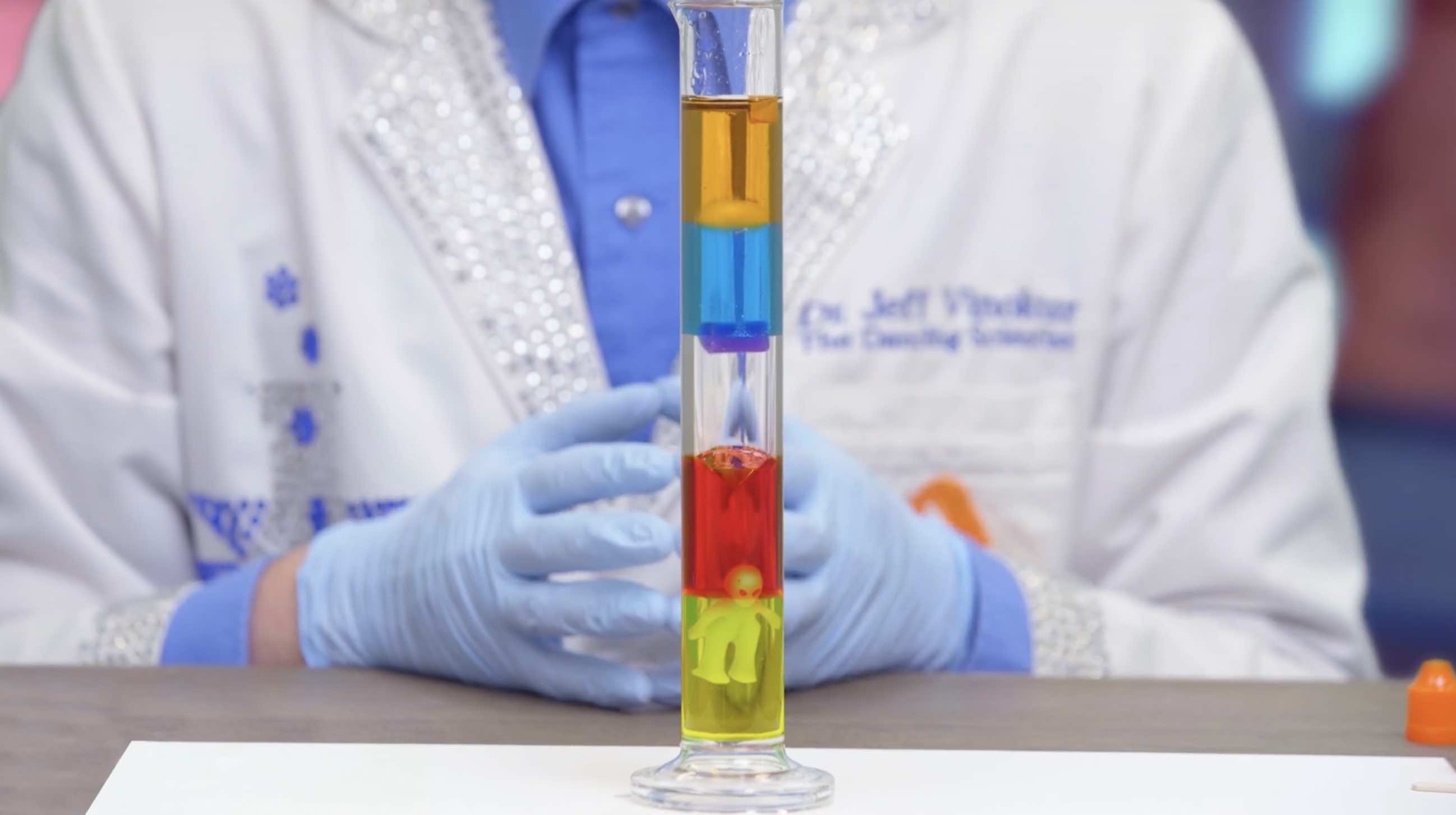Tower of Density
Materials









Instructions

Reach into your kit & pull out the bag that says Experiment 25. Take everything out of the bag and place it around your white mat.

Place the graduated cylinder on the center of your mat. Then grab the tube of Sucrose powder.

Next, set the tube of Sucrose to the side and grab the tube of Sodium Chloride. Fill it exactly to the 25 mark with cold water, recap tightly, and shake for 20 seconds to mix.

Grab the Yellow tube of Sucrose and shake it for another 10 seconds or until all of the crystals are dissolved, then pour it into the graduated cylinder.

Next, shake the red tube of Sodium Chloride until all the crystals are dissolved. Grab the bag of wood disks and drop one into the graduated cylinder.

Now using one of the pipettes, fill it with the red Sodium Chloride and slowly drip it onto the center of the wooden disk. The slower you do it, the better the liquids will stack on top of one another.

Next, rinse out one of the empty tubes and fill it to the 25 mark with cold water. Using the pipette like before, slowly drip the water onto the center of the wooden disk to layer it on top of the red color.

Now, grab the bottle of vegetable oil and gently press it against the side of the graduated cylinder and squeeze to layer it on top of the water.

For the 5th and final liquid, grab the bottle of baby oil and like before, press it against the side of the graduated cylinder and slowly squeeze to layer on top of the blue vegetable oil.

Next, scoop the wood disk out using the popsicle stick. Reach the popsicle stick down underneath the disk, and gently lift it out of the graduated cylinder.
How It Works
Next, we added objects like an alien toy, diamond, a hot glue piece, plastic ball, and even a wooden cube. They dove into the liquid tower and stopped where they felt most comfortable. The heaviest ones sank deeper because they liked the bottom where it's denser. Lighter ones floated because they preferred the top where it's less dense. This experiment also showed us to measure the density of different object in the liquids based on where they stopped.
Skip, I will use a 3 day free trial
Enjoy your free 30 days trial
We use cookies to make your experience with this site better. By using this site you agree to our use of cookies. Click "Decline" to delete and block any non-essential cookies for this site on this specific property, device, and browser. Please read our privacy policy for more information on the cookies we use.Learn More
We use cookies to improve your experience. By using this site, you agree to our use of cookies. Click "Decline" to block non-essential cookies. See our privacy policy for details.Learn More










